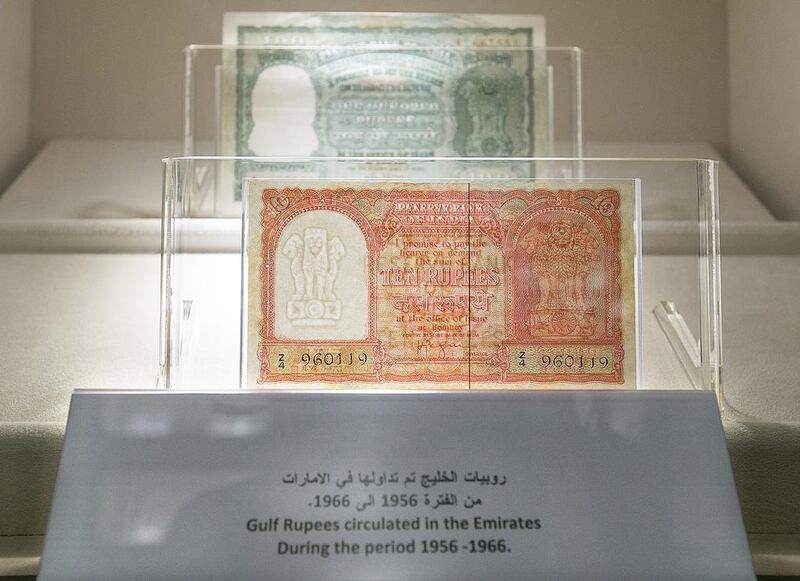ABU DHABI // A special section reserved for local collectors has excited researchers keen to display their own treasures at the Currency Museum.
Emirati coin and note aficionados said this gave the museum a connection to the public by encouraging participation.
“I like the collectors’ corner and will bring my collection here because what benefit if I keep it in the drawer?” said Ahmed al Hasawi, who has been a collector since childhood.
“I will bring my note collection before the union of Sharjah, Umm Al Quwain, Ras Al Khaimah and of gold and silver rare coins.”
One section of the museum is dedicated to banknotes with now familiar motifs of palm trees, a falcon and dhows and explains how these had been introduced since 1973.
Another section showcases how some suggested designs of camels being led near sand dunes and forts did not make the final cut.
Understanding how designs were approved and set aside also captured visitors’ interest.
“We did not see before how they chose designs for new banknotes from four-five designs and how they chose just one,” said Mr Al Hasawi, who specialises in banknotes and coins from the British-Indian period.
“We are seeing all this for the first time.
“When children see this, they will understand how we lived before.”
Other exhibits attracting attention included a large gold coin, weighing 313 grams, which was issued for the first Abu Dhabi Formula One Grand Prix in 2009. It has an impression of the Yas circuit across its 65mm diameter.
Other commemorative coins pay tribute to the UAE’s rulers, with a gold coin issued in 1996 on the 30th anniversary of the late Sheikh Zayed’s accession, and another to mark the fifth National Day in 1976.
Significant dates for the UAE are also tracked in the museum with a silver coin issued in 2001 to mark the silver jubilee of the unification of the UAE armed forces, the same year marked the inauguration of the Sheikh Rashid terminal at Dubai International Airport.
A commemorative coin was issued in 2007 for the 30th anniversary of the first LNG (liquefied natural gas) shipment from Abu Dhabi, while another was issued to observe the 40th anniversary of the UAE in 2011.
Visitors to the museum from overseas said plotting history through money was important.
“The museum tells a story about a country, its history, culture and administration, ” said Tan Chee Meng, regional head of Currency Research, an international research and consultancy organisation. Based in Malaysia, he visited the Central Bank last month and stopped by at the museum.
“I paid more attention to the chronology of events. It was well organised and very informative as well. It is interesting to also learn about the ancient knife depicted on banknotes, the ancient money and the formation of the central bank.”
rtalwar@thenational.ae







